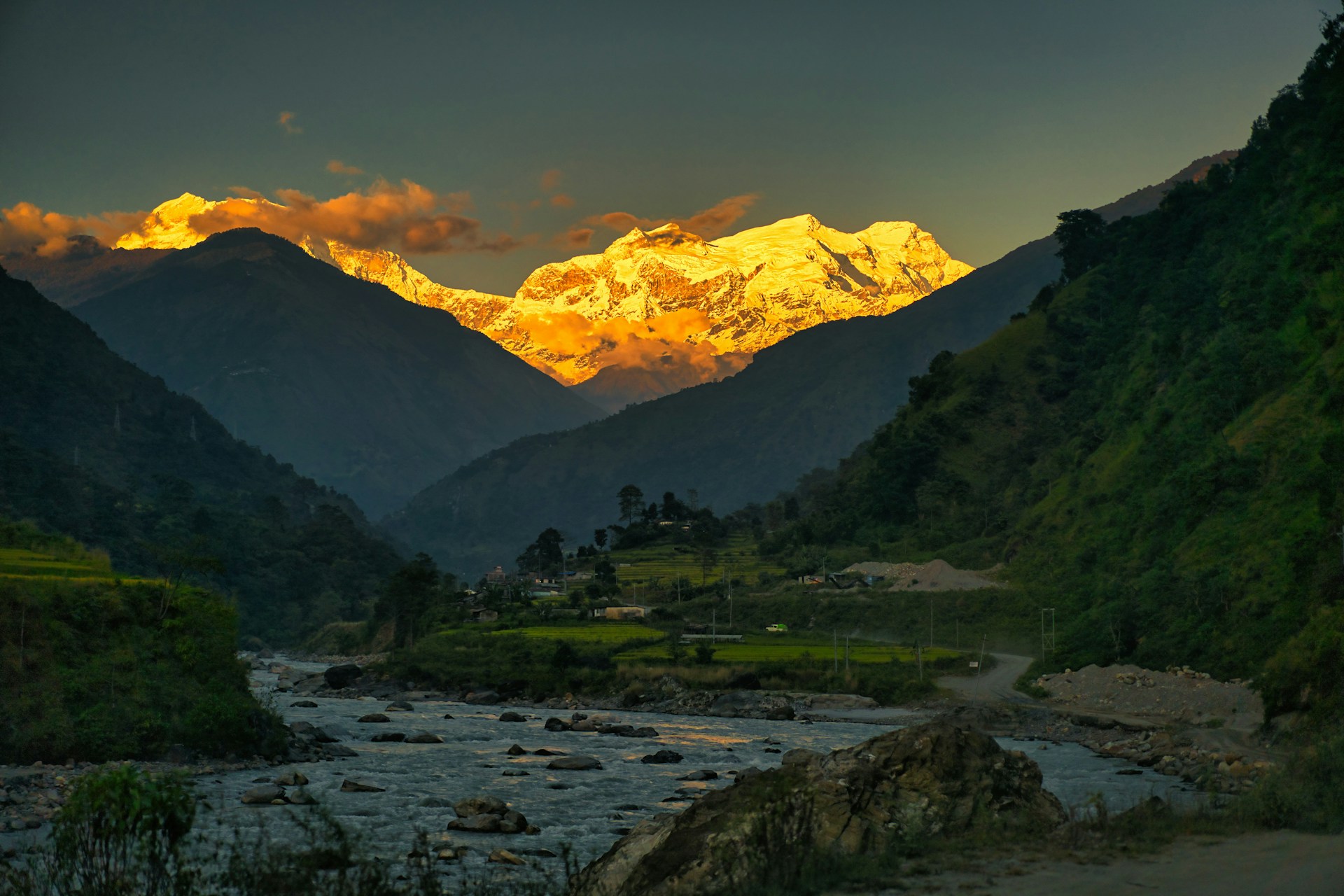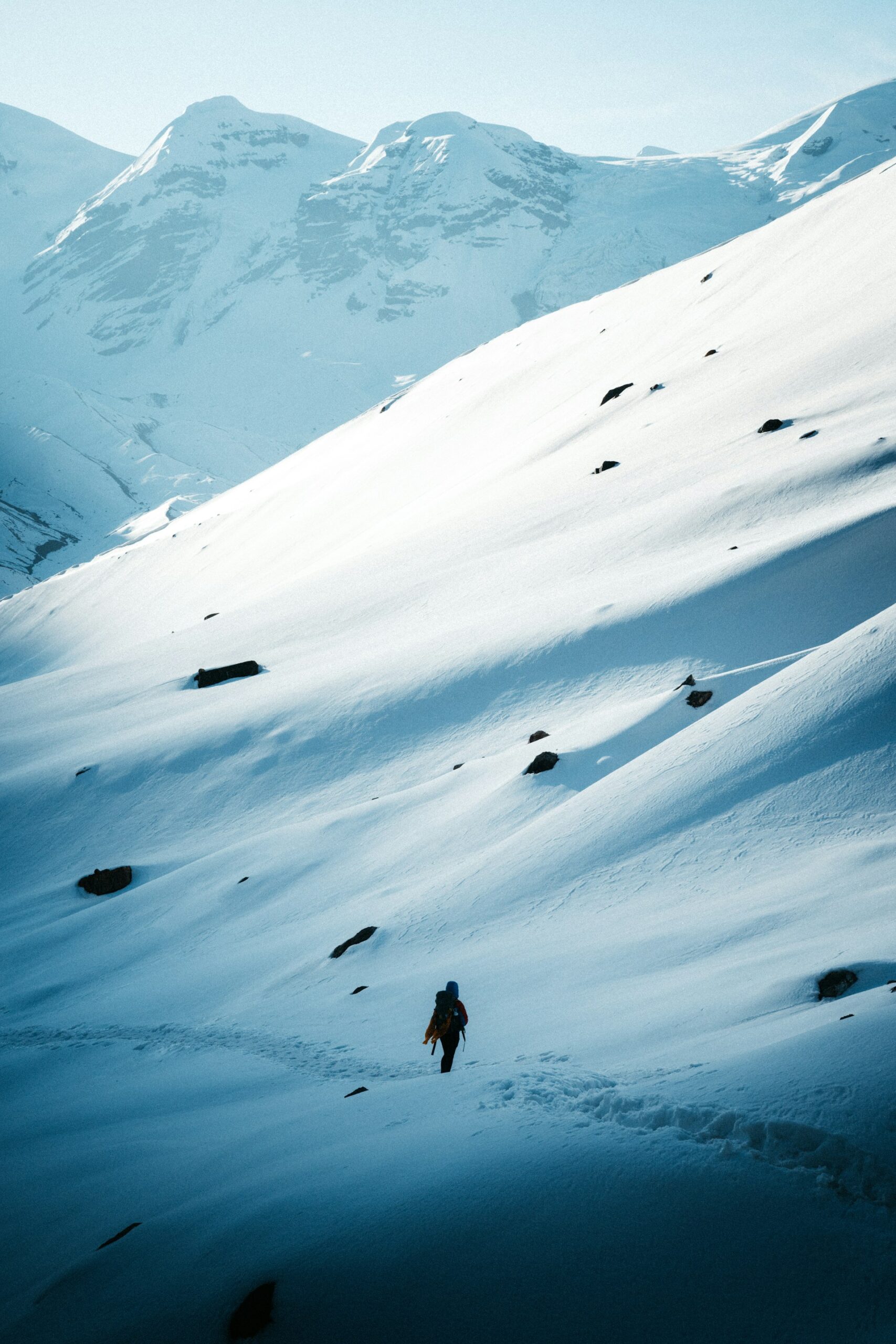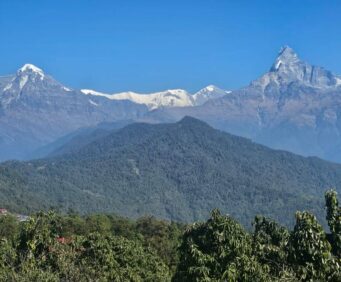
Annapurna Circuit Trek Weather and Temperature
21st April, 2024 - Posted By: Himalayan AbodeThe hike around Annapurna Himalaya is known as the Annapurna Circuit. Many tourists visit Nepal each year. The Annapurna Circuit Trek is a must-do for anybody who values nature at its best. so let’s know more information about Annapurna Circuit Trek Weather and Temperature in detail.
This circuit trek’s main attraction is the breathtaking beauty of the Annapurna region. One of nature’s greatest creations, the Annapurna region, will be visible as you wander by. Yes, it appears that paradise is quite close to this place. Heaven shall be your passageway.
The focal points of this Annapurna Circuit are several beautiful places, such as Jomsom, Muktinath, and Manang. You will reach the highest peak, Thorong La Pass (5,416m). These places provide breathtaking views.
The trails pass through the breathtaking scenery of the Annapurna region. paths that cross multiple communities and rivers. paths through lush vegetation and woodlands. This will be an adventure you enjoy.
Temperature and Weather for the Annapurna Circuit Trek
Annapurna Circuit has a distinct sound for each season of the year. Autumn weather on the Annapurna Circuit Trek is distinct from winter weather. Additionally, the spring and summer seasons are quite different from one another.
When you finish the Annapurna circuit during the ideal season, the journey is more charming and straightforward. And getting there in the off-season is just too hard. Consequently, we need to look at how the Annapurna Circuit Trek is structured based on the seasons. After that, the Annapurna Circuit Trek’s timing can be easily ascertained.
Annapurna Circuit Trek weather and temperature according to months
September
One of the greatest months to visit Nepal is September since the days are nice and sunny most of the time. With good visibility, one can see the surroundings. September marks the beginning of the height of fall conditions.
Autumn is here, and the days are growing brighter and clearer. But there will be some light rain in the first few weeks of September. And the monsoon will end by mid-September.
Beginning in the middle of the month, the autumn announces its coming by clearing up the landscape. The temperature starts to drop from about 17°C to 4°C as the rain stops. The highest point of the climb, Thorong La Pass (5416m), has a daylight temperature of about -4°C. Since it’s the first month of autumn, there may be some cloudy mountain views that are unsettling.
However, the monsoon rains and its abundant foliage flood the area. The views of the landscape are crystal clear and appealing. With each passing day, the weather begins to improve. Late September brings beautiful skies and pleasant walking weather.
October
October is a great month to do the Annapurna Circuit Trek. When precipitation is minimal or nonexistent, the climate becomes more accurate and stable. Beautiful mountain vistas with clear skies above the peaks were there for the whole month. The paths are easy to walk because of the pleasant, sunny weather.
The lowest portions of the course typically have daily temperatures of 15°C, which is warm. The higher areas are significantly colder than the lower ones. It gets really cold in the evenings and early mornings. On the other hand, many upper regions are getting near to freezing during the October days.
And the temperature drops to 7 or 8 degrees Celsius at night. Even cooler than the other locations on the circuit is the Thorong La Pass. Therefore, it is advised to pack some warm, thick clothing in your backpack.
The pleasant weather in October beckons tourists from around the globe. And after hearing about the stunning, untainted views of the Himalayas, everyone goes to see them. This explains why the Annapurna blossomed and attracted many tourists this month.
November
The autumnal season ends at the end of November. November is a great month to go trekking in Nepal. The weather and climate of November are a lot like those of October.
There are still days in November with pleasant weather and beautiful, blue skies. It’s not raining or snowing, therefore there aren’t any problems this month.
This month’s average daytime temperature in the Annapurna Circuits is 15°C. Furthermore, the overnight low is in the range of 7°C to 8°C. That is only usually true, though, as higher crossings such as Thorung La Pass (5,415 m) remain glacial.
It can drop as low as -5°C in some areas near Thorung La Pass. There is a noticeable difference in temperature from day to night.
December
December marks the official start of winter. Winter is the coldest season on the Annapurna Circuit. The snow-covered mountains are hidden behind the glistening azure sky. Winter is when there is the least quantity of rainfall or none at all.
The Annapurna Circuit Trek low temperature typically varies from 10°C to 5°C at midday. Furthermore, the overnight low is -5°C. Above 4000 meters, it gets considerably cooler throughout this month.
The weather is manageable at the start of the month. The weather turns icy in the last few days of this month.
The cold weather means that snowfall could occur at any time. The trails grow more difficult when it snows. Hiking this circuit in the winter is therefore difficult. You must, then, come this month wearing all you own for the cold.
January
January, the second month of Winter, is one of the coldest months of the year. In higher altitudes, the daily temperature varies from 1°C to -10°C. There are often even colder evenings. The temperature on the lower Annapurna Circuit Trek varies from 7 to 12 degrees Celsius.
The cold weather has caused fewer people to visit the Annapurna routes. January is the best month for people who appreciate peace because there are quiet roads to travel. In addition, finding lodging is easier during the off-season.

February
The month of this year marks the changeover from winter to spring. As a result, this month offers a combination of the two seasons.
Higher elevations receive a lot of snowfall in February. There’s also a greater chance of clouds obstructing views of the Alps. It’s still quite cold at the beginning of the month.
The Annapurna Circuit Trek is extremely cold, with temperatures between -1°C and -14°C. The highest regions have much lower temperatures. However, as February comes to an end, the weather gets warmer, which gives the month more variation.
Throughout the winter, the days are shorter and the nights are longer. If you are planning to travel in February, it is important to pack warm clothing.
Weather in Spring season
March
March, the first month of the most agreeable spring season, is usually the best time to visit the Annapurna Circuit. It’s a season of greenery and flowers.
The predominant tree species on the hills and terrain are oak and rhododendron. Winter eventually vanishes from the atmosphere as the temperature rises. In a temperate environment, the likelihood of snowfall and rainfall is lower.
The average daytime temperature in the lower region is between 4°C and -8°C. The temperature can rise as much as 10°C at lunchtime. It grows colder at night and in the morning, so you should dress warmly. March has very nice weather, with views of flower-covered woodlands and snow-covered mountains.
April
enticing A wonderful sense of spring is spreading even in April. April is another well-liked month for hiking the Annapurna Circuit.
The dazzling sun peeking through the clouds makes trekking the vast paths of the Annapurna Circuit easy. There are unhindered views of mountains everywhere. The trails are therefore congested with hikers.
In April, the average daily temperature in higher locations is between 8°C and -4°C. However, the lower parts have a temperature of 20°C, which is much warmer. The nights are still cold as normal. You must therefore bring warm clothing for your trips this month.
May
Since April is the last month of the spring season, it provides wonderful trekking weather. The usual temperature in higher altitudes is between 14°C and 0°C. Furthermore, the temperature in the lower area climbs to a suitable range of 18 to 20 degrees Celsius for walking.
This is the spring month with the highest average temperature, incidentally. Moreover, the average low temperature at night is only 5°C.
This circuit’s highest point, Thorung La Pass, is also the coldest location this month. Clouds that are present near the mountains may block the views. Little showers are also expected towards the end of May. It is therefore preferable to hike throughout this month while wearing boots, slacks, and waterproof outerwear.
Weather during Monsoon Season
The monsoon, or rainy season, which is commonly known as summer, officially starts now. The lower area’s temperature during the monsoon season varies from 16 to 30 degrees Celsius.
The temperature in the higher region stays between -3°C and -4°C. The trails are muddy and slippery because it is the rainy season. The rain did not harm the higher altitudes, including Upper Mustang and Manang.
Due to the unpredictable nature of spring weather, it can rain for extended periods. As a result, in none of the excursions do the hikers view this time frame as a voyage.
However, a few brave hikers also make an appearance this month. They come here fully equipped, even with rain gear.
July
July has the highest monthly rainfall total of the year. Because to the rain, the area is slightly colder than it was last month, with temperatures ranging from 18°C to 6°C. The mercury is approximately 12°C.
Throughout July and the monsoon season, the wind from the Bay of Bengal brings on continuous rain. Furthermore, clouds roll in after a rainstorm, making it difficult to see the mountains. Thus, there’s no guarantee that this month will provide you any mountain views.
During the rainy season, there are plenty of leeches and mosquitoes along the trails in the lower sections. Because the days are usually damp and rainy, the trekkers are encouraged to pack waterproof boots, coats, and pants.
August
August includes the final 30 days of the monsoon season. The rain keeps falling from the skies onto the earth, making the environment chilly and soggy. The typical temperature is consistent with the latter month of July. Additionally, the temperature starts to rise, rising to between 19 and 23 °C.
The pathways may occasionally be blocked by landslides and erosion. The trails are slick and muddy, making them challenging to journey on. Mountain views are not guaranteed to occur because rain clouds remain in this region for the month.
Even though trekking in the rainy season is challenging, it is still possible to do it safely with the correct preparation and planning. For this reason, if you plan to hike this month, make sure you pack the proper rain gear.
Conclusion
In short, autumn and spring are the ideal times to finish this Annapurna Circuit Trek and all other treks in Nepal. This time of year is perfect for visiting the Annapurna Circuit due to the weather. It does not lessen the chance of the other two seasons, Winter and Monsoon.
Those are manageable but a little difficult. The winter and monsoon seasons are the greatest times to experience the thrill if you are an experienced hiker.
Before departing, though, you should ignore any information about the temperature and weather for the Annapurna Circuit Trek. You should have gained something from this article.
Recent Posts



